Richard Bowden
University of Surrey
"The Pedestrian next to the Lamppost" Adaptive Object Graphs for Better Instantaneous Mapping
Apr 06, 2022

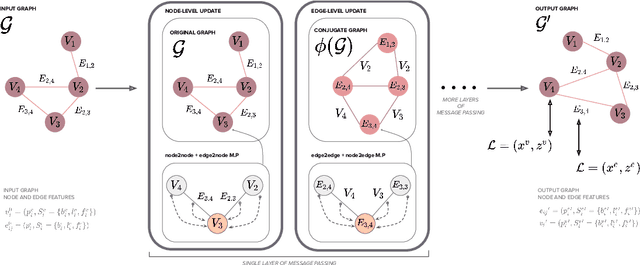

Abstract:Estimating a semantically segmented bird's-eye-view (BEV) map from a single image has become a popular technique for autonomous control and navigation. However, they show an increase in localization error with distance from the camera. While such an increase in error is entirely expected - localization is harder at distance - much of the drop in performance can be attributed to the cues used by current texture-based models, in particular, they make heavy use of object-ground intersections (such as shadows), which become increasingly sparse and uncertain for distant objects. In this work, we address these shortcomings in BEV-mapping by learning the spatial relationship between objects in a scene. We propose a graph neural network which predicts BEV objects from a monocular image by spatially reasoning about an object within the context of other objects. Our approach sets a new state-of-the-art in BEV estimation from monocular images across three large-scale datasets, including a 50% relative improvement for objects on nuScenes.
Signing at Scale: Learning to Co-Articulate Signs for Large-Scale Photo-Realistic Sign Language Production
Mar 29, 2022
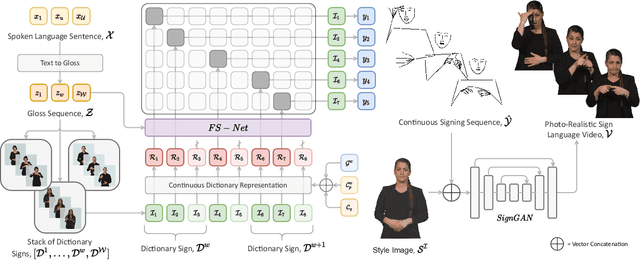
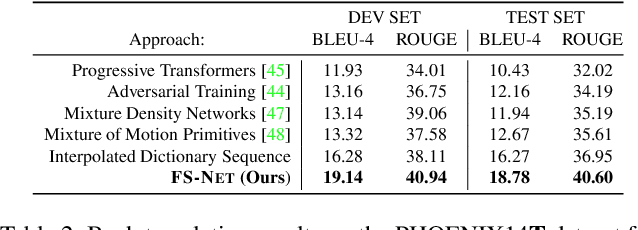
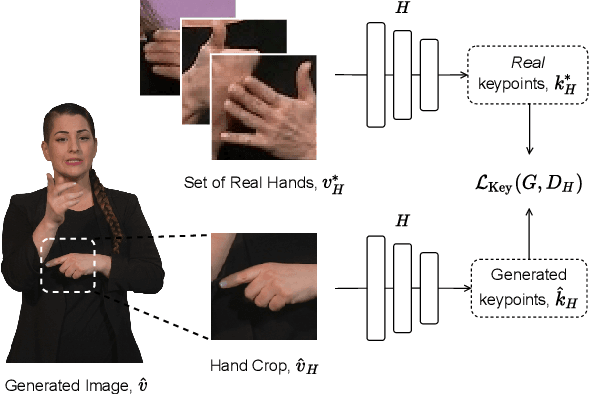
Abstract:Sign languages are visual languages, with vocabularies as rich as their spoken language counterparts. However, current deep-learning based Sign Language Production (SLP) models produce under-articulated skeleton pose sequences from constrained vocabularies and this limits applicability. To be understandable and accepted by the deaf, an automatic SLP system must be able to generate co-articulated photo-realistic signing sequences for large domains of discourse. In this work, we tackle large-scale SLP by learning to co-articulate between dictionary signs, a method capable of producing smooth signing while scaling to unconstrained domains of discourse. To learn sign co-articulation, we propose a novel Frame Selection Network (FS-Net) that improves the temporal alignment of interpolated dictionary signs to continuous signing sequences. Additionally, we propose SignGAN, a pose-conditioned human synthesis model that produces photo-realistic sign language videos direct from skeleton pose. We propose a novel keypoint-based loss function which improves the quality of synthesized hand images. We evaluate our SLP model on the large-scale meineDGS (mDGS) corpus, conducting extensive user evaluation showing our FS-Net approach improves co-articulation of interpolated dictionary signs. Additionally, we show that SignGAN significantly outperforms all baseline methods for quantitative metrics, human perceptual studies and native deaf signer comprehension.
A Free Lunch with Influence Functions? Improving Neural Network Estimates with Concepts from Semiparametric Statistics
Feb 18, 2022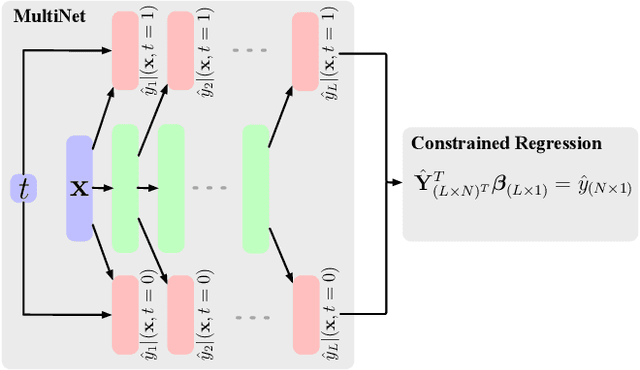
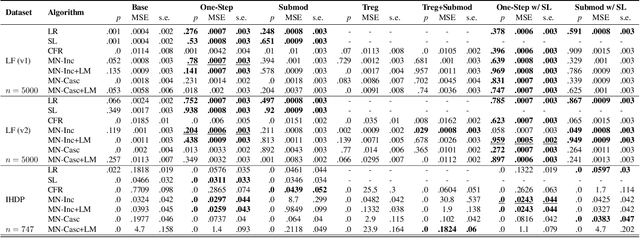

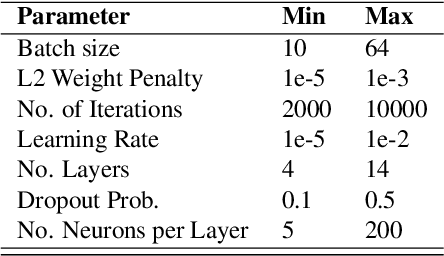
Abstract:Parameter estimation in the empirical fields is usually undertaken using parametric models, and such models are convenient because they readily facilitate statistical inference. Unfortunately, they are unlikely to have a sufficiently flexible functional form to be able to adequately model real-world phenomena, and their usage may therefore result in biased estimates and invalid inference. Unfortunately, whilst non-parametric machine learning models may provide the needed flexibility to adapt to the complexity of real-world phenomena, they do not readily facilitate statistical inference, and may still exhibit residual bias. We explore the potential for semiparametric theory (in particular, the Influence Function) to be used to improve neural networks and machine learning algorithms in terms of (a) improving initial estimates without needing more data (b) increasing the robustness of our models, and (c) yielding confidence intervals for statistical inference. We propose a new neural network method MultiNet, which seeks the flexibility and diversity of an ensemble using a single architecture. Results on causal inference tasks indicate that MultiNet yields better performance than other approaches, and that all considered methods are amenable to improvement from semiparametric techniques under certain conditions. In other words, with these techniques we show that we can improve existing neural networks for `free', without needing more data, and without needing to retrain them. Finally, we provide the expression for deriving influence functions for estimands from a general graph, and the code to do so automatically.
Multi-Camera Sensor Fusion for Visual Odometry using Deep Uncertainty Estimation
Dec 23, 2021Abstract:Visual Odometry (VO) estimation is an important source of information for vehicle state estimation and autonomous driving. Recently, deep learning based approaches have begun to appear in the literature. However, in the context of driving, single sensor based approaches are often prone to failure because of degraded image quality due to environmental factors, camera placement, etc. To address this issue, we propose a deep sensor fusion framework which estimates vehicle motion using both pose and uncertainty estimations from multiple on-board cameras. We extract spatio-temporal feature representations from a set of consecutive images using a hybrid CNN - RNN model. We then utilise a Mixture Density Network (MDN) to estimate the 6-DoF pose as a mixture of distributions and a fusion module to estimate the final pose using MDN outputs from multi-cameras. We evaluate our approach on the publicly available, large scale autonomous vehicle dataset, nuScenes. The results show that the proposed fusion approach surpasses the state-of-the-art, and provides robust estimates and accurate trajectories compared to individual camera-based estimations.
MDN-VO: Estimating Visual Odometry with Confidence
Dec 23, 2021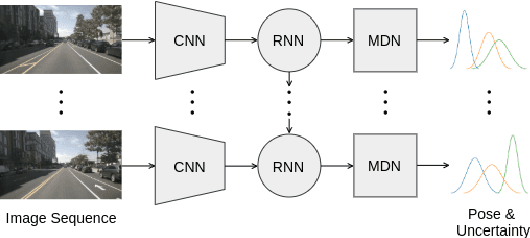
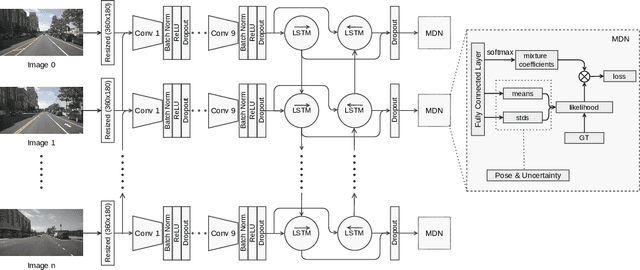
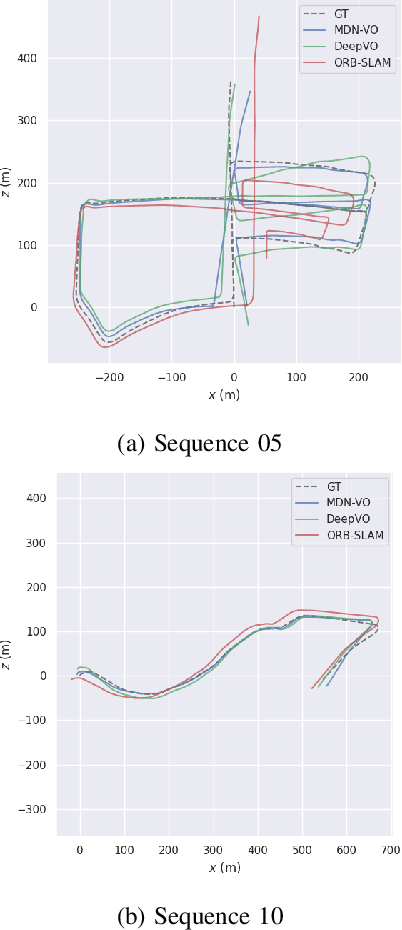
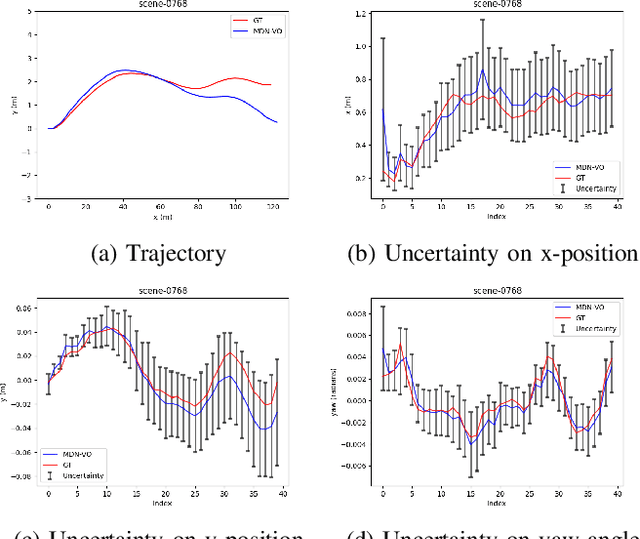
Abstract:Visual Odometry (VO) is used in many applications including robotics and autonomous systems. However, traditional approaches based on feature matching are computationally expensive and do not directly address failure cases, instead relying on heuristic methods to detect failure. In this work, we propose a deep learning-based VO model to efficiently estimate 6-DoF poses, as well as a confidence model for these estimates. We utilise a CNN - RNN hybrid model to learn feature representations from image sequences. We then employ a Mixture Density Network (MDN) which estimates camera motion as a mixture of Gaussians, based on the extracted spatio-temporal representations. Our model uses pose labels as a source of supervision, but derives uncertainties in an unsupervised manner. We evaluate the proposed model on the KITTI and nuScenes datasets and report extensive quantitative and qualitative results to analyse the performance of both pose and uncertainty estimation. Our experiments show that the proposed model exceeds state-of-the-art performance in addition to detecting failure cases using the predicted pose uncertainty.
Skeletal Graph Self-Attention: Embedding a Skeleton Inductive Bias into Sign Language Production
Dec 06, 2021



Abstract:Recent approaches to Sign Language Production (SLP) have adopted spoken language Neural Machine Translation (NMT) architectures, applied without sign-specific modifications. In addition, these works represent sign language as a sequence of skeleton pose vectors, projected to an abstract representation with no inherent skeletal structure. In this paper, we represent sign language sequences as a skeletal graph structure, with joints as nodes and both spatial and temporal connections as edges. To operate on this graphical structure, we propose Skeletal Graph Self-Attention (SGSA), a novel graphical attention layer that embeds a skeleton inductive bias into the SLP model. Retaining the skeletal feature representation throughout, we directly apply a spatio-temporal adjacency matrix into the self-attention formulation. This provides structure and context to each skeletal joint that is not possible when using a non-graphical abstract representation, enabling fluid and expressive sign language production. We evaluate our Skeletal Graph Self-Attention architecture on the challenging RWTH-PHOENIX-Weather-2014T(PHOENIX14T) dataset, achieving state-of-the-art back translation performance with an 8% and 7% improvement over competing methods for the dev and test sets.
Human Pose Manipulation and Novel View Synthesis using Differentiable Rendering
Nov 24, 2021
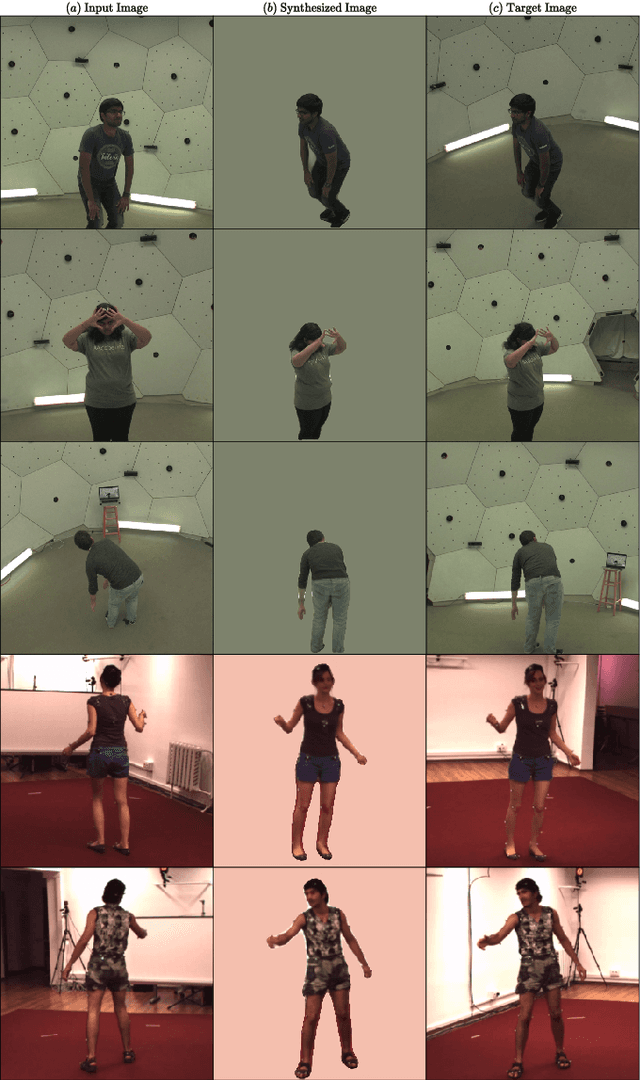
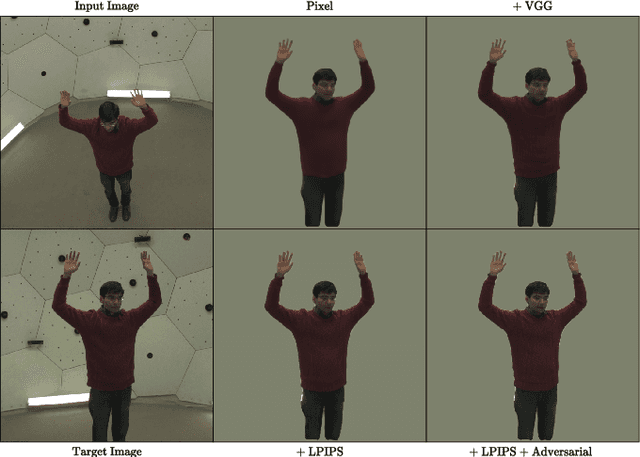
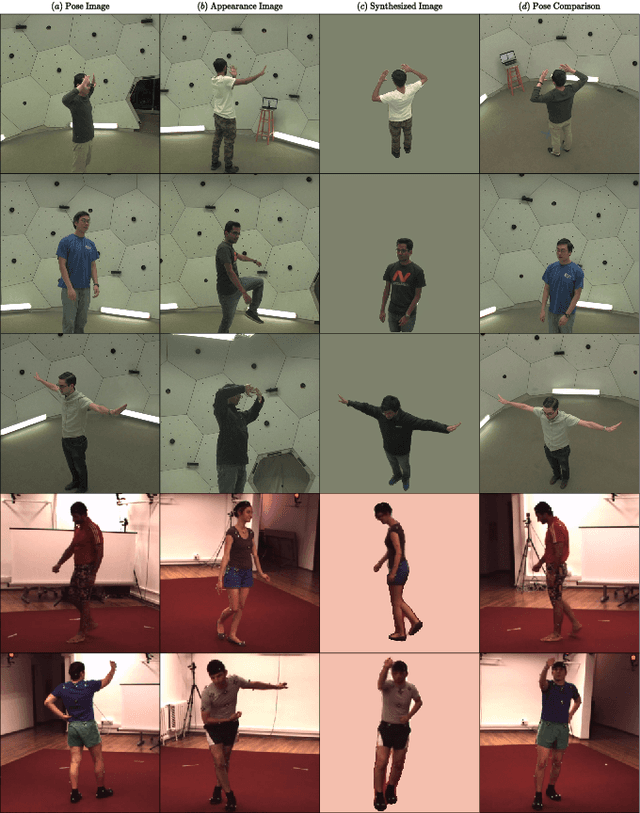
Abstract:We present a new approach for synthesizing novel views of people in new poses. Our novel differentiable renderer enables the synthesis of highly realistic images from any viewpoint. Rather than operating over mesh-based structures, our renderer makes use of diffuse Gaussian primitives that directly represent the underlying skeletal structure of a human. Rendering these primitives gives results in a high-dimensional latent image, which is then transformed into an RGB image by a decoder network. The formulation gives rise to a fully differentiable framework that can be trained end-to-end. We demonstrate the effectiveness of our approach to image reconstruction on both the Human3.6M and Panoptic Studio datasets. We show how our approach can be used for motion transfer between individuals; novel view synthesis of individuals captured from just a single camera; to synthesize individuals from any virtual viewpoint; and to re-render people in novel poses. Code and video results are available at https://github.com/GuillaumeRochette/HumanViewSynthesis.
Translating Images into Maps
Oct 03, 2021
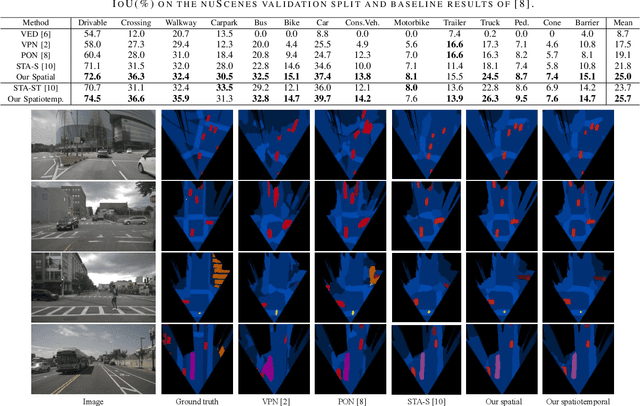
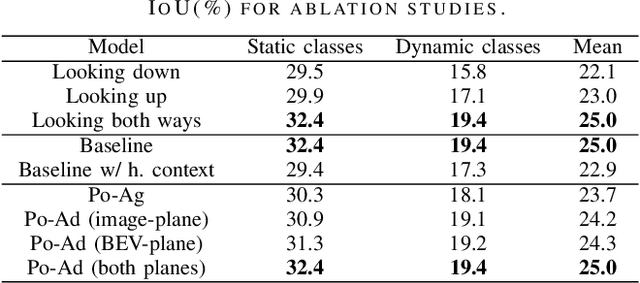
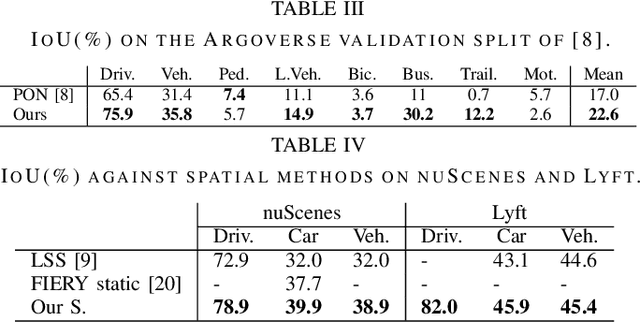
Abstract:We approach instantaneous mapping, converting images to a top-down view of the world, as a translation problem. We show how a novel form of transformer network can be used to map from images and video directly to an overhead map or bird's-eye-view (BEV) of the world, in a single end-to-end network. We assume a 1-1 correspondence between a vertical scanline in the image, and rays passing through the camera location in an overhead map. This lets us formulate map generation from an image as a set of sequence-to-sequence translations. Posing the problem as translation allows the network to use the context of the image when interpreting the role of each pixel. This constrained formulation, based upon a strong physical grounding of the problem, leads to a restricted transformer network that is convolutional in the horizontal direction only. The structure allows us to make efficient use of data when training, and obtains state-of-the-art results for instantaneous mapping of three large-scale datasets, including a 15% and 30% relative gain against existing best performing methods on the nuScenes and Argoverse datasets, respectively. We make our code available on https://github.com/avishkarsaha/translating-images-into-maps.
Mixed SIGNals: Sign Language Production via a Mixture of Motion Primitives
Jul 26, 2021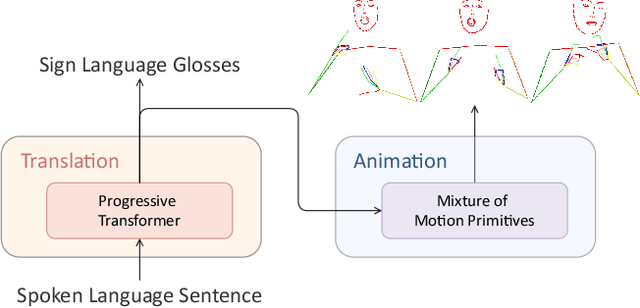
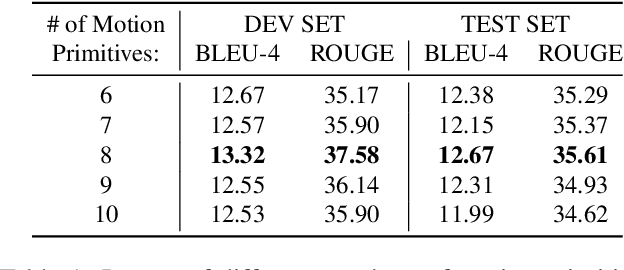
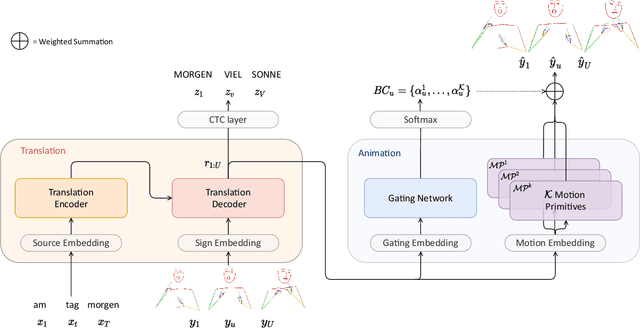
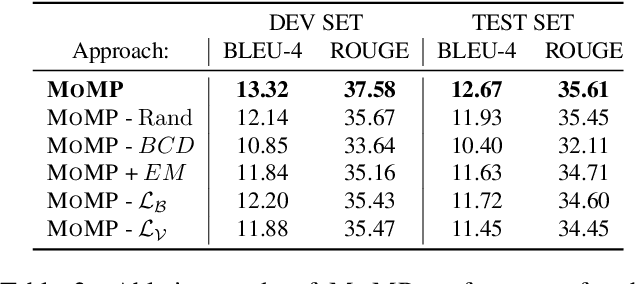
Abstract:It is common practice to represent spoken languages at their phonetic level. However, for sign languages, this implies breaking motion into its constituent motion primitives. Avatar based Sign Language Production (SLP) has traditionally done just this, building up animation from sequences of hand motions, shapes and facial expressions. However, more recent deep learning based solutions to SLP have tackled the problem using a single network that estimates the full skeletal structure. We propose splitting the SLP task into two distinct jointly-trained sub-tasks. The first translation sub-task translates from spoken language to a latent sign language representation, with gloss supervision. Subsequently, the animation sub-task aims to produce expressive sign language sequences that closely resemble the learnt spatio-temporal representation. Using a progressive transformer for the translation sub-task, we propose a novel Mixture of Motion Primitives (MoMP) architecture for sign language animation. A set of distinct motion primitives are learnt during training, that can be temporally combined at inference to animate continuous sign language sequences. We evaluate on the challenging RWTH-PHOENIX-Weather-2014T(PHOENIX14T) dataset, presenting extensive ablation studies and showing that MoMP outperforms baselines in user evaluations. We achieve state-of-the-art back translation performance with an 11% improvement over competing results. Importantly, and for the first time, we showcase stronger performance for a full translation pipeline going from spoken language to sign, than from gloss to sign.
Improving Robot Localisation by Ignoring Visual Distraction
Jul 25, 2021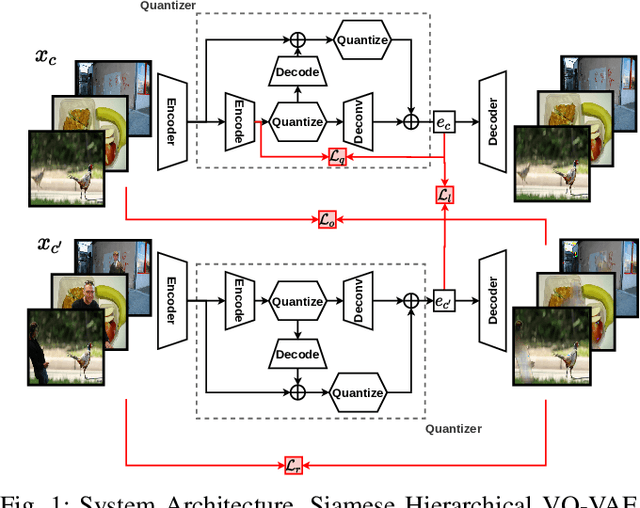
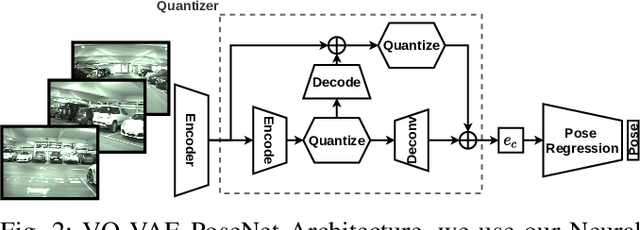
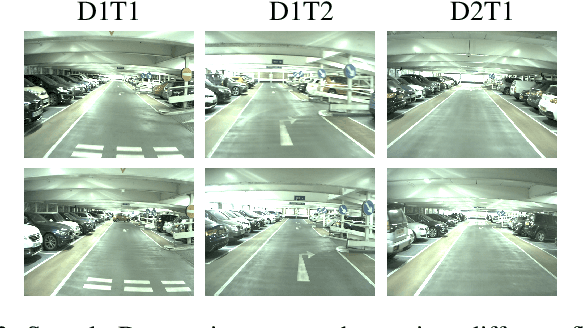
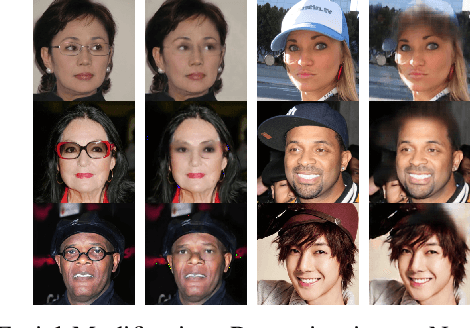
Abstract:Attention is an important component of modern deep learning. However, less emphasis has been put on its inverse: ignoring distraction. Our daily lives require us to explicitly avoid giving attention to salient visual features that confound the task we are trying to accomplish. This visual prioritisation allows us to concentrate on important tasks while ignoring visual distractors. In this work, we introduce Neural Blindness, which gives an agent the ability to completely ignore objects or classes that are deemed distractors. More explicitly, we aim to render a neural network completely incapable of representing specific chosen classes in its latent space. In a very real sense, this makes the network "blind" to certain classes, allowing and agent to focus on what is important for a given task, and demonstrates how this can be used to improve localisation.
 Add to Chrome
Add to Chrome Add to Firefox
Add to Firefox Add to Edge
Add to Edge